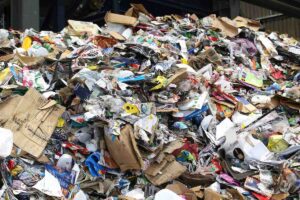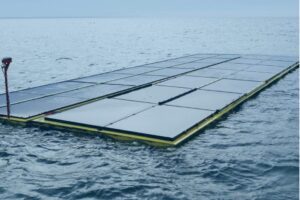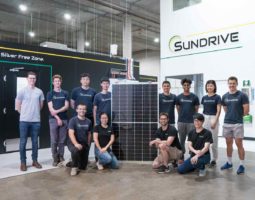Australia could become a leading global supplier of green energy and green metals, producing as much as 3,000 per cent renewable electricity to power the production in new green export industries, leading energy experts say.
Addressing the 2021 ANU Energy Update in Canberra on Wednesday, the director of the ANU Energy Change Institute, Professor Ken Baldwin, said that a vision of Australia as a global supplier of green energy and green metals, like steel and aluminium, could see Australia produce as much a 3,000 per cent of its electricity consumption from renewable energy sources.
While the figures cited by Baldwin are highly ambitious, they are based on the assumption that Australia’s competitive advantages in both renewable energy resources and reserves of iron and aluminium ores could allow Australia to seize a significant share of a decarbonised metal industry.
“Using renewable hydrogen to reduce iron ores and turn it into metal, we could be exporting 50 million tons of green steel compared to six million tonnes of ordinary steel at the moment, and 80 million tonnes of grade aluminium compared to two million tonnes,” Baldwin told the 2021 ANU Energy Update.
“This would take large amounts of renewable energy. If you add all this up, the total amount of renewable electricity required is 7,040 terawatt-hours a year. That is 27-times Australia’s present electricity generating capacity.”
“And if you add that to the 100 per cent of domestic electricity that we need at the moment, and another 200 per cent, that we need to electrify everything else, then that becomes 3,000 per cent renewable energy,” Baldwin added.
Green products, including steel, aluminium, and hydrogen are emerging as significant future economic opportunities for resource-rich countries like Australia, as global efforts to address climate change and decarbonise economies continue to ramp up.
The key to a successful pivot will be the production of low-cost renewable energy and the development of new technologies that allow products like green steel to be produced using hydrogen rather than coal.
Convener of the ANU’s Hydrogen Fuels Project, Dr Fiona Beck, told the ANU Energy Update event that the scaling up of renewable energy production would be vital to producing renewable hydrogen at a price that would be competitive with existing supplies of fossil-fuel-based hydrogen.
“At the moment, low emission fossil fuel-based hydrogen is still cheaper than green hydrogen, quite significantly,” Beck told the forum.
“However, there is a clear pathway for the cost reductions in renewable hydrogen, and this is because the costs of renewable hydrogen are determined by the cost of the renewable energy driving the electrolyser and the cost of the electrolyser itself.”
“Renewable energy costs have fallen rapidly over the last few decades and are likely to continue doing so. Additionally, electrolyser costs are very likely to decrease as well,” Beck added. Electrolysers are a very mature technology. They have been used in industry for a very long time, but they are niche at the moment.”
“They are not used very widely. If we scale up production to the types of gigawatts that we’re talking about, to produce renewable energy, there is a very quick learning curve that we will move down, and cost could come down very rapidly.”
A recent analysis published by BloombergNEF found it would be feasible for the world to transition to decarbonised steel production by 2050 but warned that if countries were slow to pivot into producing green steel, they could lose out.
Convenor of the ANU’s Renewable Metal Refining Project, professor John Pye, warned Australia was at risk of losing two of its largest export revenue streams, being thermal coal and iron ore, if it failed to respond to the growing demand for decarbonised materials.
“Australia depends very heavily on energy exports. Metallurgical coal, as opposed to thermal coal, is a huge one and, of course, iron ore,” Pye said.
“But neither of these markets are secure in the long term. Brazil has high-grade iron ore, and as countries are going to be transitioning to hydrogen, it is entirely possible that we lose both our iron ore and our coal exports.”
“We don’t understand yet enough about how iron ore will be adapted to our particular grades in Australia, we really need to spend time getting across how to adjust the process to be cost-effective at scale with Pilbara ores, or we risk losing a really big income stream.”
Lies, myths and greenwashing. Good independent journalism is time-consuming and costly. But small independent media sites like RenewEconomy have been excluded from the tens of millions of dollars being handed out to big media companies from the social media giants. To enable us to continue to hold government and business to account, to cut through the lies and the misinformation about the renewable transition, and to help expand our work, you can make a voluntary donation here to help ensure we can continue to offer the service free of charge and to as wide an audience as possible. Thank you for your support.










